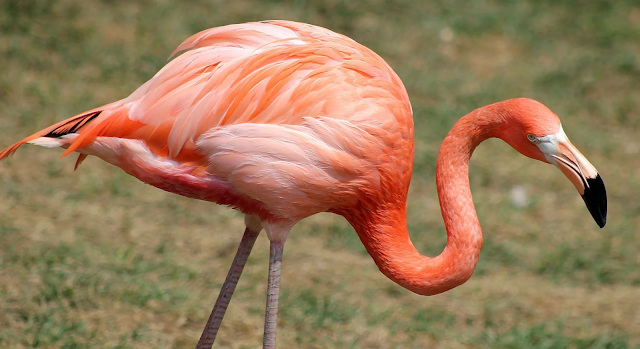Flamingo: The Elegant Bird of the Wetlands
Introduction
Flamingos are among the most recognizable birds in the world, known for their striking pink plumage, long legs, and graceful stance. These fascinating birds inhabit tropical and subtropical regions, thriving in saline and alkaline lakes, lagoons, and estuaries. In this comprehensive guide, we explore everything about flamingos—from their habitat and diet to their behavior and conservation status.
What is a Flamingo?
Flamingos belong to the Phoenicopteridae family and are classified into six species:
- Greater Flamingo (Phoenicopterus roseus) – The largest species, found in Africa, the Middle East, and southern Europe.
- Lesser Flamingo (Phoeniconaias minor) – Smaller in size and commonly seen in Africa and India.
- Chilean Flamingo (Phoenicopterus chilensis) – Inhabits South America, particularly in Chile and Argentina.
- Andean Flamingo (Phoenicoparrus andinus) – Native to the Andes Mountains in South America.
- James's Flamingo (Phoenicoparrus jamesi) – Another Andean species, also known as the Puna Flamingo.
- American Flamingo (Phoenicopterus ruber) – Found in the Caribbean, Galápagos Islands, and parts of Florida.
Flamingo Habitat and Distribution
Flamingos are typically found in shallow lakes, salt flats, estuaries, and coastal lagoons. They prefer warm climates, although some species adapt to colder conditions. They are distributed across continents, including Africa, South America, the Caribbean, the Middle East, and parts of Europe and Asia.
Why Do Flamingos Live in Saline Water?
Flamingos thrive in saline and alkaline environments because these areas provide abundant food sources and minimal competition from other animals. Their specialized glands help excrete excess salt, allowing them to survive in harsh conditions.
What Do Flamingos Eat?
Flamingos are filter feeders, meaning they consume food by straining water through their specialized beaks. Their diet consists of:
- Algae
- Crustaceans (such as shrimp and mollusks)
- Diatoms and plankton
- Small aquatic insects
Why Are Flamingos Pink?
The vibrant pink or reddish color of flamingos comes from their diet. The carotenoid pigments in the algae and crustaceans they consume are metabolized into astaxanthin, which gives their feathers a pink hue. Flamingos in captivity may appear pale if not given a proper diet rich in carotenoids.
Flamingo Behavior and Social Structure
Flock Living
Flamingos are highly social birds, often found in large flocks of thousands. Living in groups helps them protect against predators and increases breeding success.
Unique Mating Rituals
Flamingos engage in elaborate courtship displays, which include synchronized dancing, head-flagging, and wing-flapping. These rituals help them find a suitable mate, and once paired, they are usually monogamous.
How Do Flamingos Build Their Nests?
Flamingos build mud nests to protect their eggs from flooding and predators. Each nest is about 12 inches high, and a single egg is laid per breeding season. Both parents take turns incubating the egg for about 27–31 days.
Adaptations That Make Flamingos Unique
Flamingos have several adaptations that enable them to thrive in their environments:
- Webbed Feet – Help them walk on soft, muddy surfaces.
- Long, Curved Beaks – Specialized for filter feeding.
- Salt Glands – Remove excess salt from their bodies.
- Long Legs – Allow them to wade through deep waters.
- Flexible Neck – Aids in feeding while keeping their heads underwater.
Conservation Status and Threats
Flamingos face various threats, including habitat destruction, pollution, climate change, and illegal poaching. Some species, like the Andean Flamingo, are classified as vulnerable, while others have stable populations.
Conservation Efforts
- Protected Wetlands – Conservation programs focus on preserving their natural habitats.
- Breeding Programs – Zoos and wildlife reserves help maintain genetic diversity.
- Environmental Awareness – Educating communities about the importance of protecting flamingo habitats.
Fun Facts About Flamingos
- Flamingos can sleep while standing on one leg! This helps them conserve body heat.
- They produce "crop milk" to feed their chicks. This nutrient-rich secretion comes from their upper digestive tract.
- Flamingos are excellent swimmers, despite being wading birds.
- Their unique beaks work like a natural filtration system.
- A group of flamingos is called a "flamboyance."
Conclusion
Flamingos are truly remarkable creatures, known for their beauty, social behavior, and adaptability. Their ability to thrive in extreme environments and their striking pink color make them a symbol of elegance in the bird kingdom. However, conservation efforts are crucial to ensuring these majestic birds continue to flourish in the wild. By understanding and appreciating flamingos, we can contribute to their protection and celebrate their unique role in nature.











0 Comments